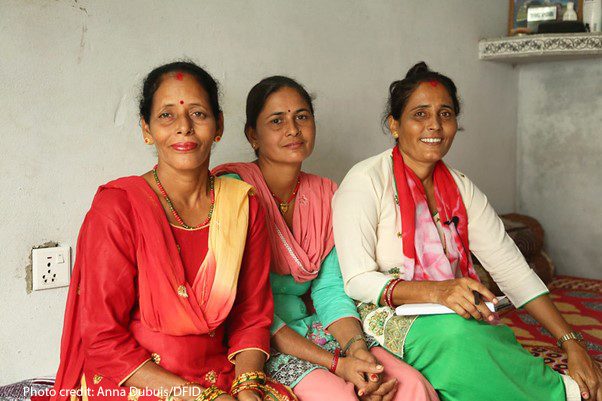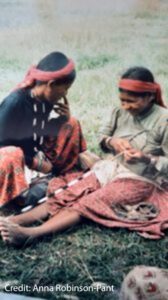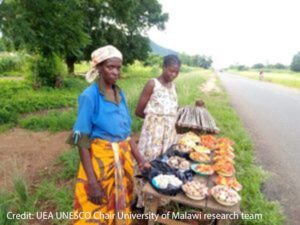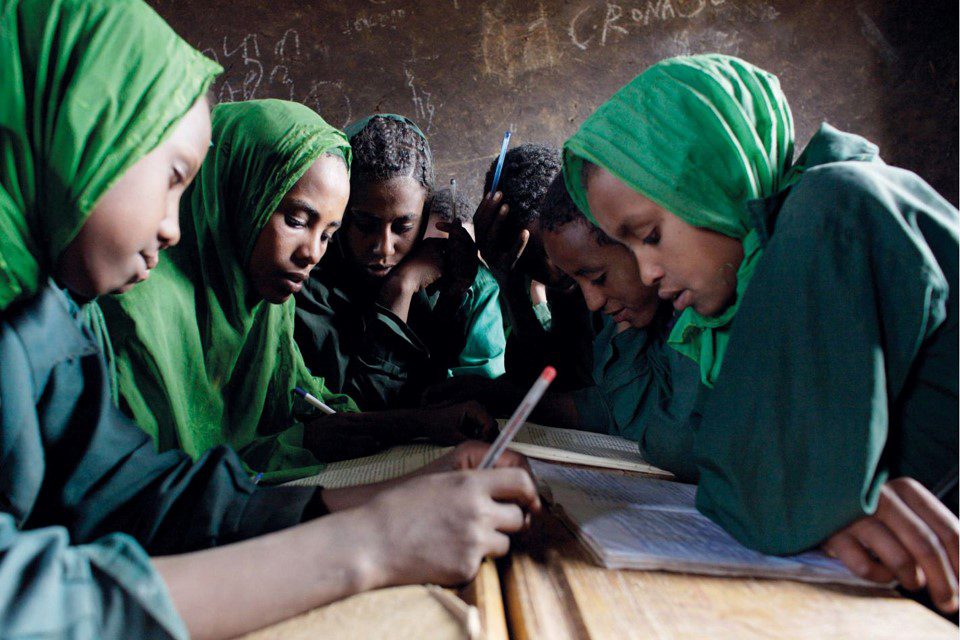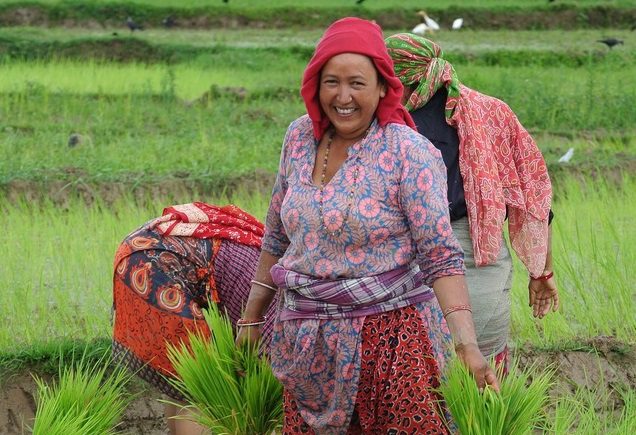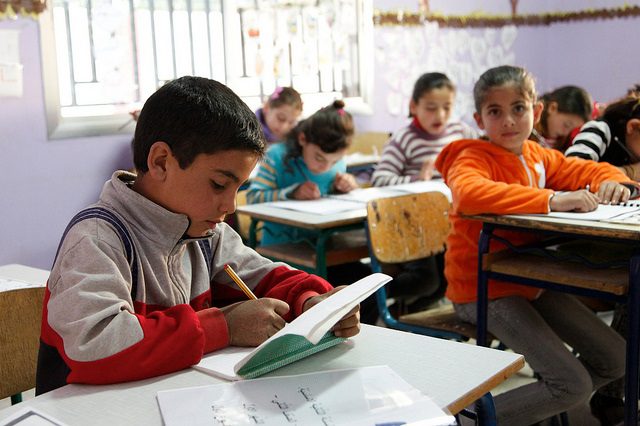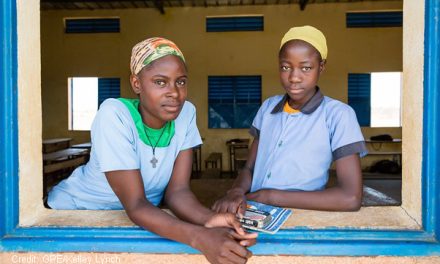This blog was written by Anna Robinson-Pant, Professor of Education at the School of Education and Lifelong Learning, University of East Anglia, Norwich, UK, and UNESCO Chair in Adult Literacy and Learning for Social Transformation. It was originally published on the NORRAG website on 22 June 2023.
In this blog, Anna Robinson-Pant comments on the Foreign, Commonwealth and Development Office’s (FCDO) International Women and Girls Strategy 2023-2030 by drawing on findings from a recent family literacy project. She notes that the report puts forward “3 Es” as priority areas , i) Educating girls, ii) Empowering women and girls & championing their health rights, and iii) Ending gender-based violence, without making connections between them. She argues that greater attention needs to be paid to everyday learning and bottom-up approaches to women’s empowerment as a way to join up the “3 Es”.
I was excited to see the recent publication of the FCDO’s International Women and Girls Strategy 2023-2030 (FCDO, 2023) – and I was immediately struck by the title. It’s unusual to see an emphasis on “women” alongside “girls”, particularly in the field of education where the policy agenda has for many decades focused exclusively on girls’ access to schooling. As a researcher in adult literacy and learning, I have been all too aware of women who missed out on education as children and are no longer seen as a priority for national governments or donor agencies. Perhaps this new strategy would offer an opportunity to focus on adult women’s educational aspirations too?
Reading the strategy paper, I quickly realised that the dominant policy discourse on women’s education is relatively unchanged. Long ago, King and Hill’s seminal book on Women’s Education in Developing Countries argued that “A better educated mother has fewer and better educated children. She is more productive at home and in the workplace” (King and Hill, 1993, p. 12). Women’s education was seen as a great investment with secure returns. Fast forward to 2023 and the FCDO paper begins with similar statements about the benefits of women’s education to the economy and society, citing statistical evidence on the relationship between women’s literacy and health outcomes: “A child whose mother can read is 50% more likely to live beyond the age of five, 50% more likely to be immunised” (FCDO, 2023, p. 8).
So, what is the problem with this stance? For several decades, researchers have been exploring what actually lies behind the figures. Firstly, all too often, correlation is taken as causation when policy makers cite the evidence between increased female literacy rates and improved child health – disregarding a third (or multiple) variable, not least income, which affects women’s access both to education and health. Secondly, as Lalage Bown pointed out in 1990, women’s literacy rates conflate two different educational processes. The majority of women who are measured as “literate” will have learned literacy at school when they were children. However, the literacy rates also include some women who learned to read and write in adult literacy programmes or through everyday life activities. In the FCDO paper, as in most other policy documents, the solution to increasing female literacy rates lies exclusively in schools – other kinds of learning are invisible.
FCDO identifies “3 Es” as their priority themes and these are: i) Educating girls, ii) Empowering women and girls & championing their health rights, and iii) Ending gender-based violence. Significantly, education is proposed only for girls, as women-in-becoming. There is little mention of education for adult women in the here and now, except for those in higher education. The strategies put forward for women’s empowerment and ending gender-based violence (the other two “Es”) are however clearly targeted at adults. More ambitious in scope and addressing barriers to women’s leadership, the paper recommends core funding for grassroots women’s rights organisations to help facilitate women’s political and social empowerment.
What is lacking in this strategy paper is any attempt to join up the 3 “Es” – and this is where adult learning comes in. This was a missed opportunity to explore where and how education connects with women’s empowerment and development.
As I discovered early in my career as a “developer”, unschooled or “illiterate” women often engage with learning in dynamic and spontaneous ways. This photo dates from 1986 when I was a VSO volunteer teacher in the Far West of Nepal, an area without roads at the time. These women porters often spent hours or days waiting for a plane to arrive. Here they are sitting on the airstrip making necklaces, teaching each other new techniques, exchanging beads and comparing different designs from different communities. This was all learning for fun, not for livelihoods – their income was earned through carrying loads of up to 40 kilos to the district headquarters or beyond.
This kind of learning – and what might be seen as “empowering” in relation to creativity and ownership – is a real contrast with many education and development programmes targeted at adult women today. My colleague, Sushan Acharya, and I observed through ethnographic research in Nepal that training for volunteer women health workers is often delivered in a “top-down” way by health specialists in a classroom (Acharya and Robinson-Pant, 2019). We found that the Ministry of Health training manual had a section on “stages of breastfeeding” which read like DIY technical instructions: “Keep infant’s neck and head straight. Infant should be attached to the mother”. Such programmes tend to formalise the informal oral learning that takes place within communities through codifying it in text and disregard intergenerational learning processes between younger and older women. This instrumental view of literacy can contribute to intensifying power hierarchies between male instructors and female participants, between educated and non-educated women, and between female community health volunteers and the women they work with. Within the classroom, this educational approach appears disempowering. However, from another perspective, this health initiative in Nepal could be seen as empowering: the women receive allowances to attend the training in a nearby town, gain a certificate, a uniform sari and enhanced status in their community. It is not a linear path from education and training to women’s empowerment!
To understand how education can shape gender relations and enhance women’s livelihoods, we also need to look outside formal and nonformal educational programmes. Cultural and religious practices are often considered a barrier to women’s empowerment. Yet, in our recent UEA UNESCO Chair (2021) Family Literacy research project, we discovered that religious literacy could become a rich domain for indigenous and intergenerational learning, especially for women. In a Nepali Muslim community, fourteen-year-old Rosa ran a class for her siblings and neighbours on her terrace in the early morning and evening. Without training or payment, she taught them how to read Islamic texts and the Arabic alphabet. Having attended a madrasa to grade 7, Rosa was recognised for reciting devotional prayers so beautifully that her family took her to India to help with a relative’s funeral rites. Here, the aim of literacy learning was quite different from the functional or instrumental approach promoted in policy papers. Although Rosa gained greater mobility and status within this community through her informal teaching and reading, she talked about literacy in terms of her identity and religious duty, rather than as a means of “empowerment”.
The policy challenge is how to develop a more holistic approach to adult education that recognises informal community learning like this. This means including men and boys in programmes too – particularly if we are to tackle gender-based violence, as the FCDO paper sets out to do, and in the face of increasing male migration and boys dropping out from school. Educational providers have tended to take a “literacy first” approach, substituting formal learning for knowledge that is embedded in everyday activities and assuming that women need to read and write before they can learn new skills. So how can providers build on indigenous and intergenerational learning?
In Malawi, our UNESCO Chair researchers talked to women selling mushrooms on the roadside and accompanied them up into the forests. They noted how the children learned to recognise poisonous mushrooms, as their parents shared detailed scientific knowledge about how they grew and their characteristics. The adults scaffolded the children’s learning through allocating different roles, so that they could learn how to carry and store the mushrooms carefully until they reached the road. This training took place in the forest and on the roadside, not in a classroom – and it did not involve reading and writing. This is not to suggest that literacy might not be useful to these women, possibly in improving the marketability of their mushrooms. But an educational provider could first engage with intergenerational learning approaches in this community. Rather than taking women into a classroom to learn literacy from a primer and making separate provision for young and old, educators could reflect on how to use everyday spaces as a resource for learning.
This is how the FCDO strategy paper could begin to join the three “Es”. Education is not just for young girls and it doesn’t only take place in schools, as the first E implies. Rather than proposing that i) Education is separate from ii) Empowering women and iii) Ending gender violence, the strategy could explore how to build on the adult learning embedded in and emerging through, for instance, women’s activism. Women’s rights organisations could be supported to explore “bottom-up” approaches to skill development, that can promote inclusion of more non-literate women. The assumption that learning should take place in formal educational institutions and through literacy has often led to the poorest women being overlooked. As the examples from our research in Nepal and Malawi have illustrated, through learning within indigenous institutions and outside the classroom, women are able to decide what kind of knowledge is valuable to their lives. This is an ideal moment to rethink what we mean by education and women’s empowerment.
———————-
References:
Acharya, S. and A. Robinson-Pant (2022) Towards a reconceptualisation of family literacy: exploring religious literacy learning and practices in two communities in Nepal, Compare.
Acharya, S. and A. Robinson-Pant (2019) Women, literacy and health: comparing health and education sectoral approaches in Nepal, Compare, 49/2, pp 211-229.
Bown, L. (1990) Preparing the Future: Women, Literacy and Development, London: ActionAid.
King, E.M. and A. Hill (1993) Women’s Education in Developing Countries: Barriers, Benefits and Policies, Baltimore, USA: John Hopkins University Press.
Ministry of Health and Population (2015) Interpersonal communication and counseling skill development manual for Female Community Health Volunteers, Kathmandu: Nepal.

